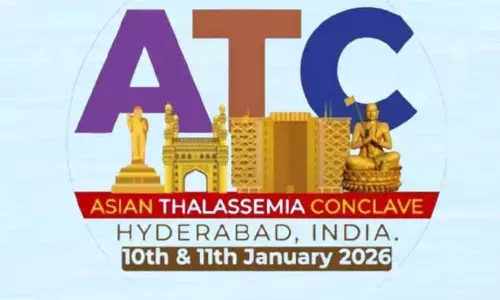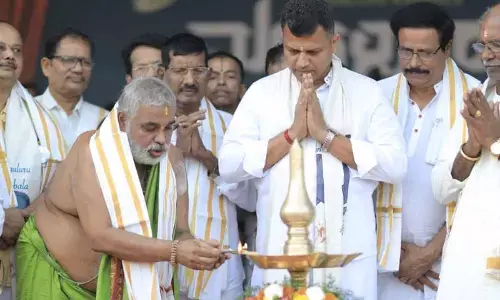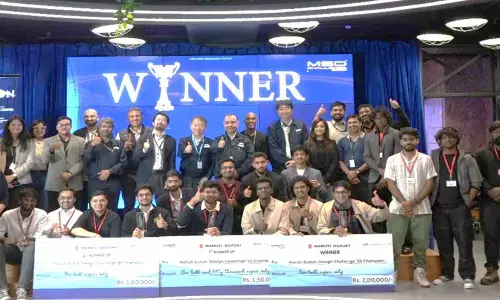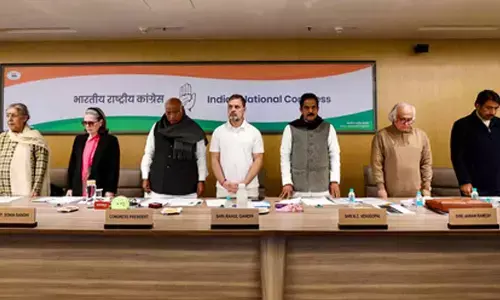Coming together is the beginning; keeping toge

The journey of Larry Page and Saji Bryn and their team, of ‘Google’ fame, from a garage project, to a technological giant, is an even more spectacular illustration of what team work can do.
The journey of Larry Page and Saji Bryn and their team, of ‘Google’ fame, from a garage project, to a technological giant, is an even more spectacular illustration of what team work can do. Another glittering example, that showcased the power of effort informed by a sense of togetherness, was that of the runway success achieved by ‘The Beatles’, one of the greatest music bands ever. Worth recollecting, in this context, is the truly insightful observation on teamwork by Ken Blanchard, an American author, business consultant motivational speaker: “None of us is as smart as all of us”, bringing out the spirit, of collective endeavour being an example, of the whole being more than the sum of its parts
“Coming together is the beginning; keeping together is progress; working together is success.” – Henry Ford.
I read recently about a person who, while taking his evening walk, observed an army, or colony, of ants, actively engaged in carrying a load of food, to the underground hole which served as their home. He was struck by the spirit of teamwork which informed their activity, with each supporting the other, every step of the way. The movements were swift, performed with care and the sense of purpose was strong and unwavering. The load being carried was constantly shared, and the leading ant regularly changed, with the result that the burden of leadership was evenly distributed, with there never being a single leader. The most striking fact was that every ant knew its role, and carried out its task unhesitatingly and with commitment. No task was considered important, or otherwise, and allocation of tasks was frequently changed, having regard to the age, and ability. Of the ant concerned.
Such a remarkable degree of collaboration, and teamwork, is, strangely enough, not confined to ants and, is, in fact, quite common in nature. A whole lot of furry, and scaly, creatures, from packs of wolves to flocks of geese, survive on those qualities. They stick together because they have to – it is critical to their survival.
While it may not be so critical a factor for human beings to survive, the ability to function as a team, and work towards a common goal, is often necessary to achieve success in a career, be it in politics, in public or private service or in professions, such as the law, medicine or engineering. That is so because it is teamwork that allows one to see issues from various angles, find hidden parts and proceed towards a clear solution to challenges. It infuses, and fosters, a sense of belonging and camaraderie, and encourages the formation of bonds beyond individual interest.
Team spirit also sees one through the ups and downs of life, with successes being celebrated together, and a shoulder being available to lean upon, in times of distress. The sense of unity, and support, createsa positive, and empowering, environment where individuals feel valued, and inspired to give of their best.
The performance of a given task, by a group of people, is often like the conveyor belt in a factory, where, by the addition of different components, and ingredients, at different stages of the rolling belt, an end product emerges in complete shape. In the writing of a book, for example, the idea of the theme may come from one person or organisation, the actual script written by another, editing done by a third, and finally, the printing by a fourth. Thereafter, come activities such as a function to release the book, and its marketing, usually undertaken by a publisher. In the absence of a timely, and effective, contribution, by the person or agency concerned, at the appropriate stage, the purpose of the exercise will be defeated. Each contributor has a set of skills, and strengths, which can supplement, or complement, those of the other actors. That process of mutual reinforcement, primarily aimed at avoiding gaps and overlaps, is essential to the completion of the task in a satisfactory manner.
Andrew Carnegie, the Scottish American industrialist and philanthropist, neatly highlighted the value of team effort, saying, “Teamwork is the fuel that allows common people to attain uncommon results”. History offers many striking examples of successful teamwork leading to spectacular achievements. A glowing testament to the value of team work is the story of the inventors of the airplane, Wright brothers, Wilbur and Orville, who, through their shared division and relentless collaboration, achieved the first successful power flight.
Another event in history, that brings out the importance of a group, functioning as a cohesive team towards a common goal, was the landing of the American spaceflight, Apollo 11, on the moon. That monumental achievement was the result of the united effort of a countless number of persons, working together as a team.
Yet another example of the extraordinary results that teamwork can produce was that of the American animation industry pioneer Walt Disney, and his animators, creating some of the most popular and beloved comic characters and stories, such as Mickey Mouse and Donald Duck, and effort that also brought out the need for a team to persist in the face of adverse and uncertain challenges.
The journey of Larry Page and Saji Bryn and their team, of ‘Google’ fame, from a garage project, to a technological giant, is an even more spectacular illustration of what team work can do. Another glittering example, that showcased the power of effort informed by a sense of togetherness, was that of the runway success achieved by ‘The Beatles’, one of the greatest music bands ever. Worth recollecting, in this context, is the truly insightful observation on teamwork by Ken Blanchard, an American author, business consultant motivational speaker: “None of us is as smart as all of us”, bringing out the spirit, of collective endeavour being an example, of the whole being more than the sum of its parts.
That so little can be achieved alone, and so much by being together, was also shown by the what Helen Keller the well-known American political activist, author and advocate of disability rights, could do, despite her disabilities, with the help of her teacher, and mentor, Anne Sullivan – a powerful example of how team work can overcome even the most daunting challenges. Keller had lost her sight, and hearing, when she was barely 19 months old, following a bout of illness. Thanks to Anne Sullivan, she not only learnt to read and write, but became the first deaf blind person in the USA to earn a Bachelor of Arts degree and was a Founding Member of the American Civil Liberties Union. Her birthplace has been designated, and preserved, as a National Historic Landmark, and sponsors an annual ‘Helen Keller Day’.
Every team has persons who are critical to its overall performance. Likewise, there are those who are a burden the team accepts to carry for reasons other than merit! When we were teenagers, the daily evening game of cricket would first begin, with each captain choosing his team from among those available. Although the ability to bat, bowl or field well was naturally an important criterion for the choice, what mattered most was dependability, loyalty, and proven past record. I remember how when, sometime ago, the Indian cricket team was visiting Pakistan to play a Test series there, desperate telegrams were received by the selectors, from anonymous sources in Pakistan, saying that a certain bowler shouldbe picked because the people on the other side felt he would be an advantage to them!
(The writer was formerly Chief Secretary, Government of Andhra Pradesh)

















